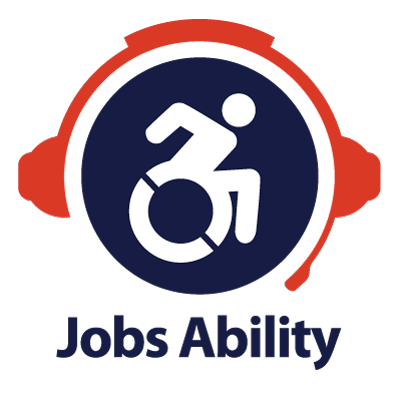Job Opportunity: Texas Health Resources | Radiology and Imaging
October 2, 2019Ability Within – Networking and Discussion on Talent Acquisition and Training Opportunities
October 9, 2019John Robinson of Glenmont is one of nine candidates in running for $50,000 grant to be awarded in D.C. on Oct. 17
For immediate release
ALBANY, NEW YORK, October 7, 2019 — The American Heart Association (AHA) is hosting the EmPOWERED to Serve Business Accelerator at the National Museum of African American History and Culture in DC on October 17th from 6-9 p.m.
This is AHA’s third year of the event and we’ve helped fund $410,000 in grants to social entrepreneurs and businesses to improve health equity with innovative solutions in their communities.
John Robinson of Glenmont, CEO of Our Ability, is one of nine candidates chosen from 140 applicants to his year’s program. Robinson’s company collaborates with employers on increasing employment opportunities for people with disabilities through Artificial Intelligence (AI) and chatbot technology.
“Our Ability is excited to tell the story of the ability of the over 40 million people with disabilities in the United States,” Robinson said. “We know from personal experience, employment leads to better health. We are excited to be on the forefront of assisting people with disabilities to lead the healthy lives they dream.”
The EmPOWERED to Serve Business Accelerator is an intense business leadership training and grant opportunity designed to help solve health disparities. Through the Business Accelerator, the American Heart Association challenges entrepreneurs, startups and non-profits to develop community-based solutions that improve long-term health by overcoming challenges in under-resourced communities.
Robinson has participated in the Business Accelerator’s eight-week MBA-style training and will join the other candidates to present their innovative concepts and ideas in a shark-tank style program at the Oct 17th event for a chance to receive grant money to implement their ideas. Roland Martin will be live streaming the event on his show #RolandMartinUnfiltered the night of the event.
The top candidate will receive a grant of $50,000 to implement their project. The second-place candidate will receive a grant of $20,000. The public can vote for their “fan favorite,” who will receive a grant of $5,000, by clicking here.
“About 40% of our health is determined by factors like our level of education, employment, income, safety and social support, all of which impact our length and quality of life,” said Amy Young, executive director of the American Heart Association in the Capital Region and the Upper Hudson Valley. “By identifying and elevating community-based initiatives that aim to improve health and well-being at the local level, the American Heart Association can make a stronger impact in its mission to be a relentless force for a world of longer, healthier lives. The Accelerator strengthens efforts that can transform under-resourced communities into equitable, safe environments in which to live a healthy life. It’s very exciting to have a local candidate in this national program.”
About John Robinson:
In March 2018, John Robinson was awarded the Capital Region Chamber Champion of the Year, in front of 1100 New York business leaders. John was one of 10 national White House Champions of Change for Disability Employment in 2014 in Washington D.C. Since 2011, he’s served as managing partner, CEO and Founder of Our Ability, which provides inclusive workforce and employment consulting, mentoring, workshops, keynotes and seminars on disability and diversity. Our Ability has a coalition of forty (40) New York State businesses interested in hiring individuals with disabilities. John was the subject of “Get Off Your Knees: The John Robinson Story,” a public television documentary.
###
ABOUT EmPOWERED to Serve™
EmPOWERED to Serve is a platform inspired by American Heart Association multicultural volunteers around the country who are passionate about driving change through health justice and empowerment in their communities. These committed ambassadors are impacting gaps in health equity through advocacy, policy, education and social change. For information, visit empoweredtoserve.org.
About the American Heart Association
The American Heart Association is devoted to saving people from heart disease and stroke – the two leading causes of death in the world. We team with millions of volunteers to fund innovative research, fight for stronger public health policies, and provide lifesaving tools and information to prevent and treat these diseases. The Dallas-based association is the nation’s oldest and largest voluntary organization dedicated to fighting heart disease and stroke. To learn more or to get involved, call 1-800-AHA-USA1, visit heart.org or call any of our offices around the country. Follow us on Facebook and Twitter.
For Media Inquiries:
Katherine McCarthy, Senior Regional Director, Communications, 518.626.8759 (office), 518.366.7920 (cell) or Katherine.McCarthy@heart.org.
heart.org and strokeassociation.org
